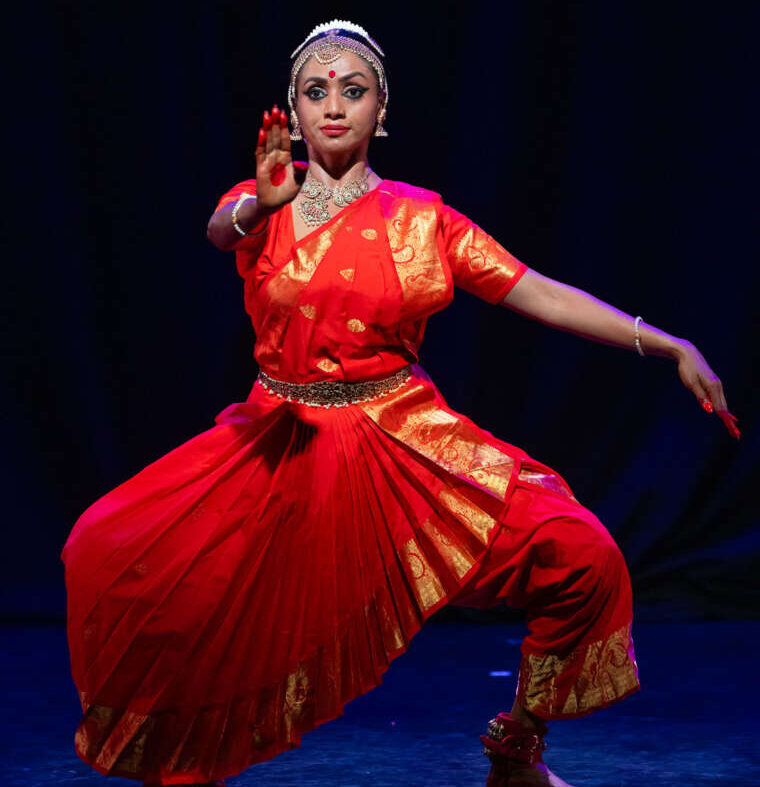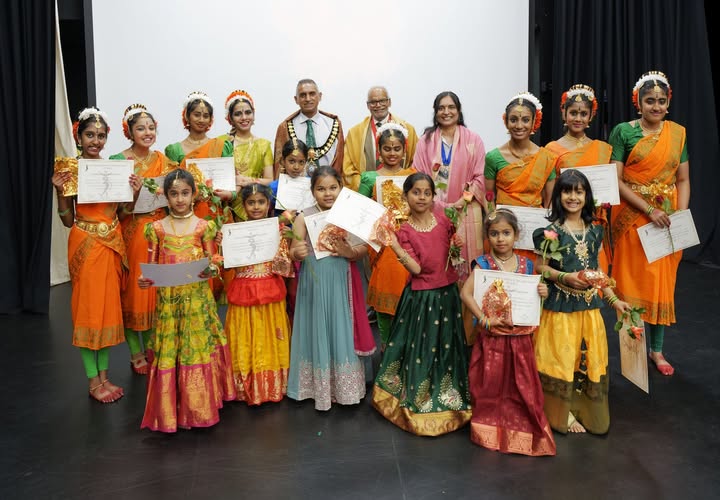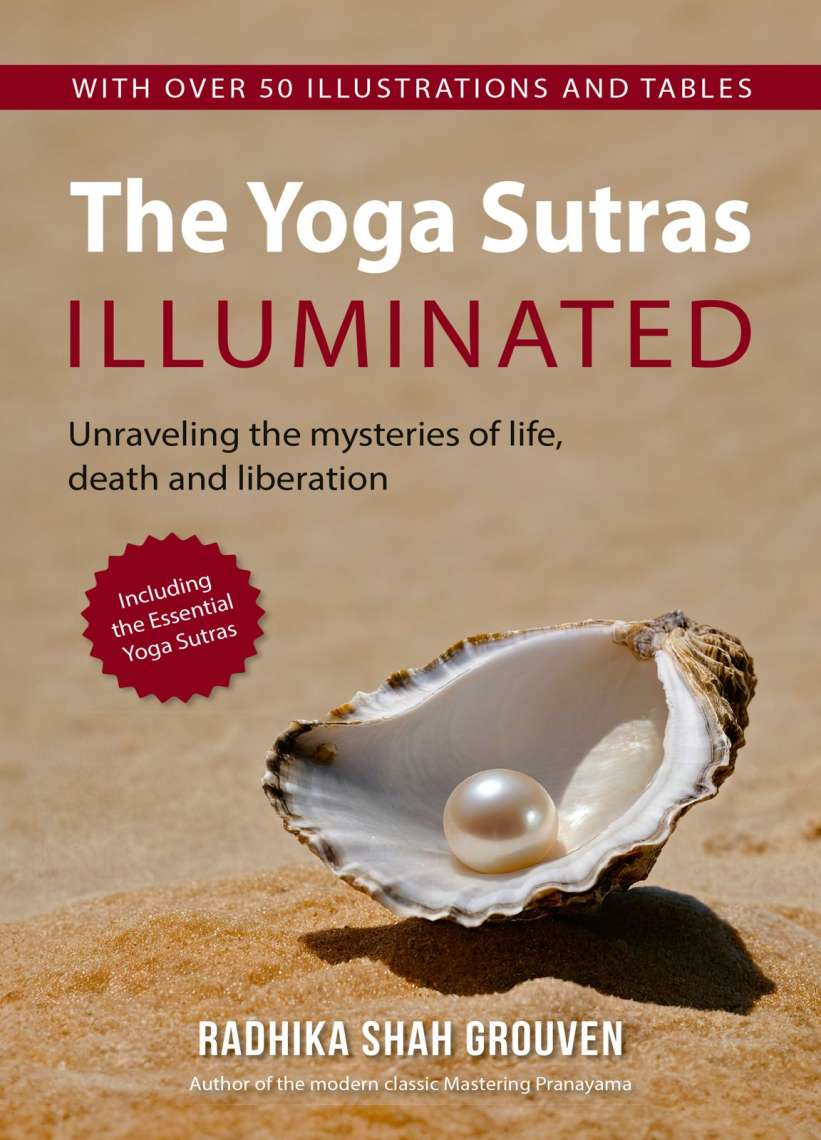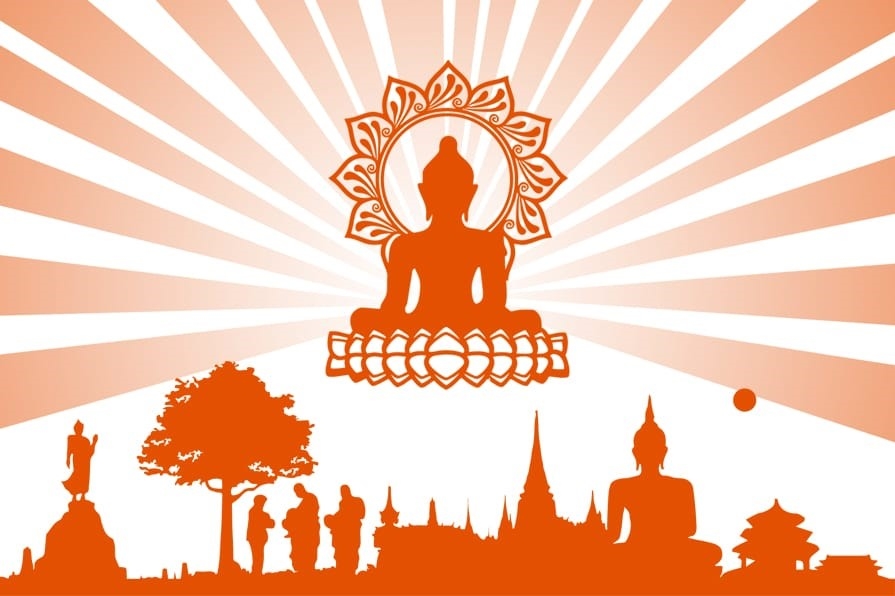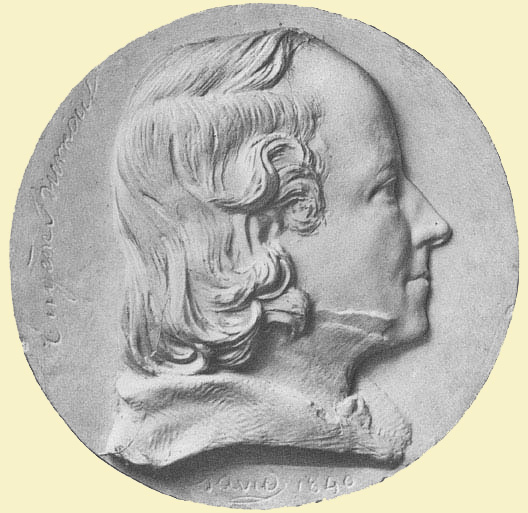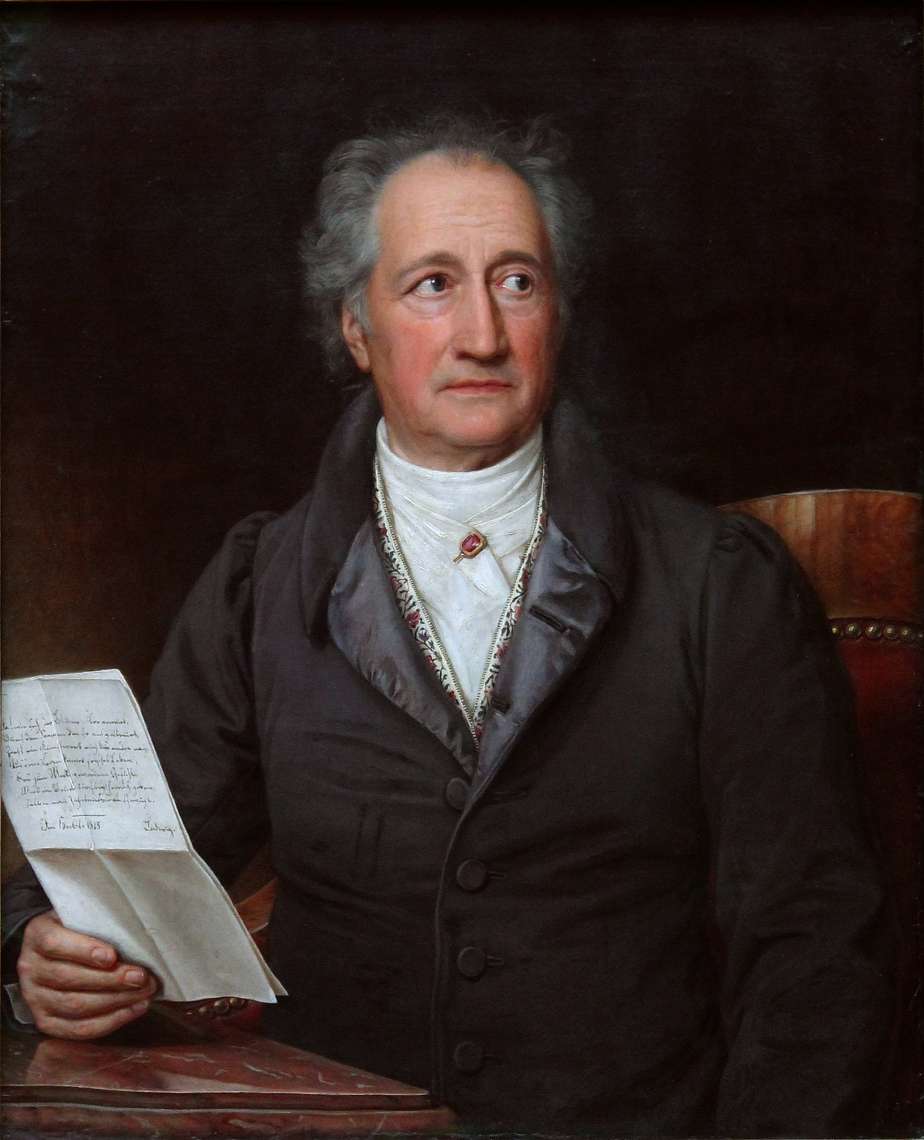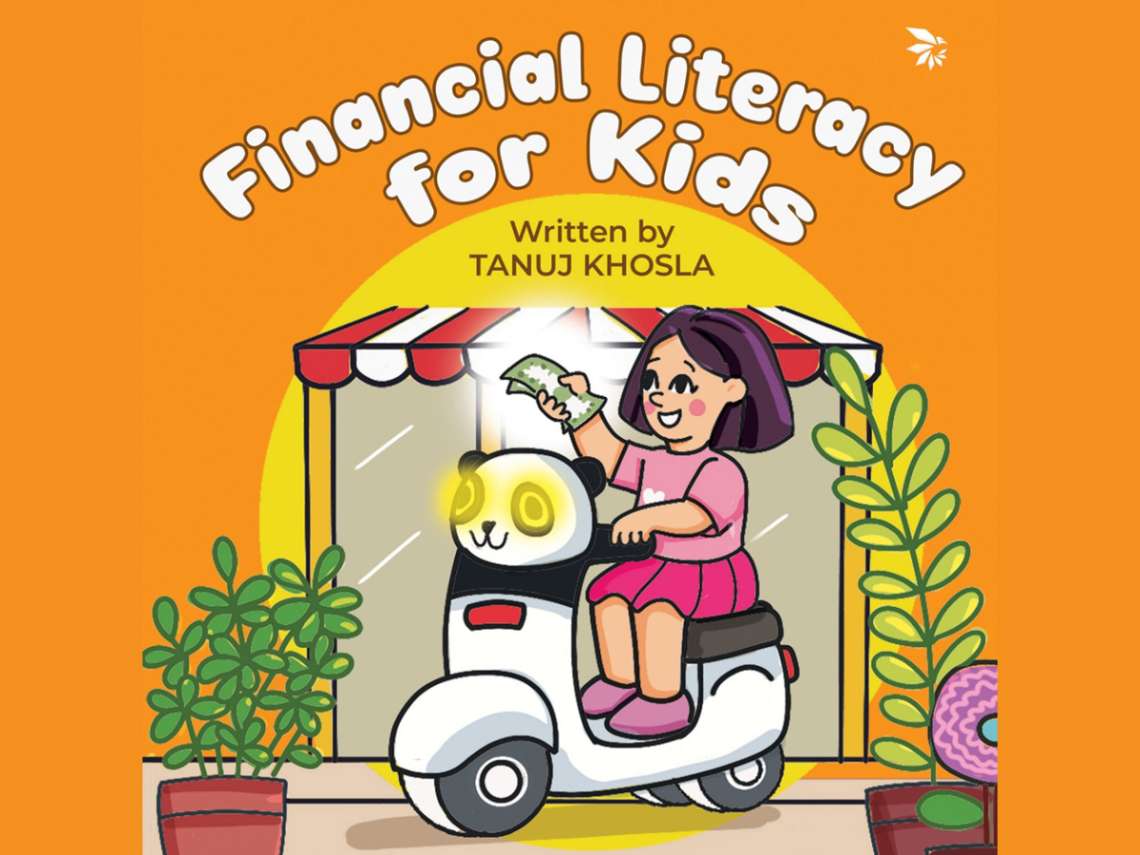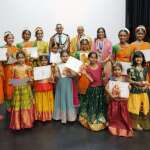Performed by Sankari Mridha at The Bhavan, London
The Bhavan auditorium in London transformed into a sacred space for a unique performance. Anantakam, presented by the award-winning artist Sankari Mridha, was far more than a Bharatanatyam recital — it was a soul offering.
Anantakam explored the pursuit of bliss through classical dance. Sankari’s selection of repertoire was deeply rooted in tradition, with two compositions created by Rukmini Devi Arundale and her disciples from the Kalakshetra lineage — beautifully demonstrating the evolving future of Bharatanatyam as it engages global audiences while staying rooted in classical aesthetics.
What stood out was how grammar met imagination. In pieces like Yati — based on the cosmic dance of Shiva and its manifestation in rhythmic structures — Sankari displayed remarkable command over form and innovation. Though the concept was contemporary in thought, the execution was steeped in classicism. The energy, clarity, and angika abhinaya (expressive language of the limbs) were impeccable.
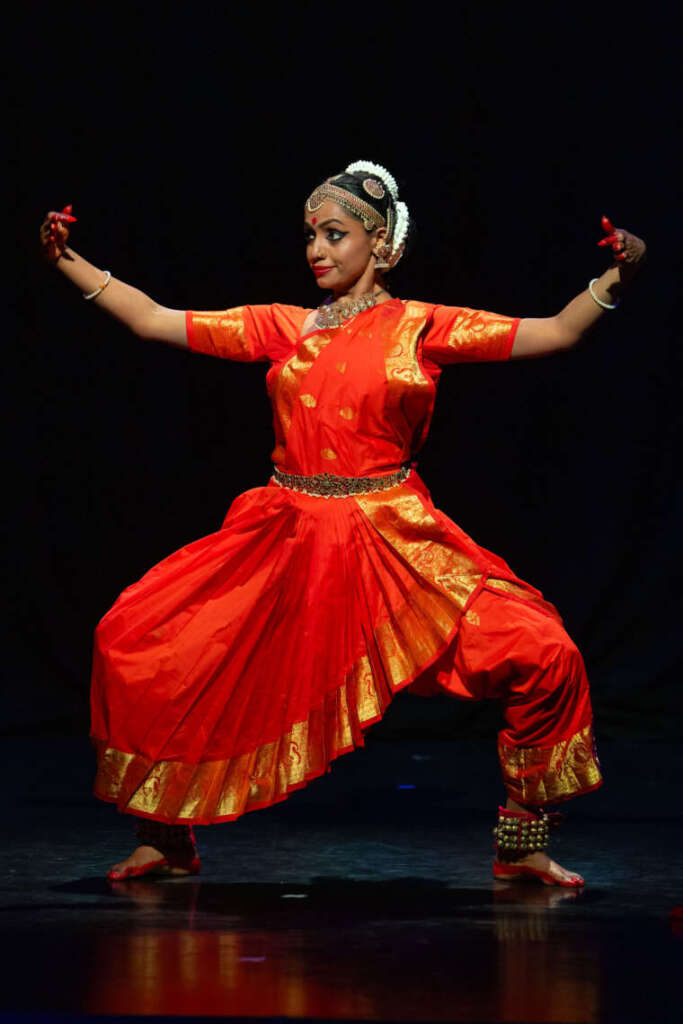
Even in slower pieces such as the Ashtapadi, her strength, extension, and emotional control never waned. Sankari’s stamina and consistency from the vibrant opening to the final Hindolam Tillana was extraordinary, a point highlighted with admiration by senior guru and critic Pushkala Gopal, who noted the “rigour and finesse maintained from the first to the last piece.”
The live orchestra — a rare and rich experience in today’s performance landscape — added depth and dynamism to the recital. Vamshikrishna Vishnudas’s soulful vocals carried the emotional weight of each piece, beautifully supported by his son Shreyas, whose singing marked the blossoming of a promising new talent. Prathap Ramachandra’s inventive rhythmic play, particularly in the Ashtapadi, using the kanjira and the side of the mridangam, provided a striking contrast to the more vigorous pieces. Vijay Venkat’s nuanced flute improvisations (manodharma) in Vasanti Raga sat in perfect harmony with the Natya on stage, enhancing mood and melody with refined sensitivity. Amritha Jayakrishnan’s Nattuvangam was precise and meditative, and her Tirmanams added structure and grace throughout.
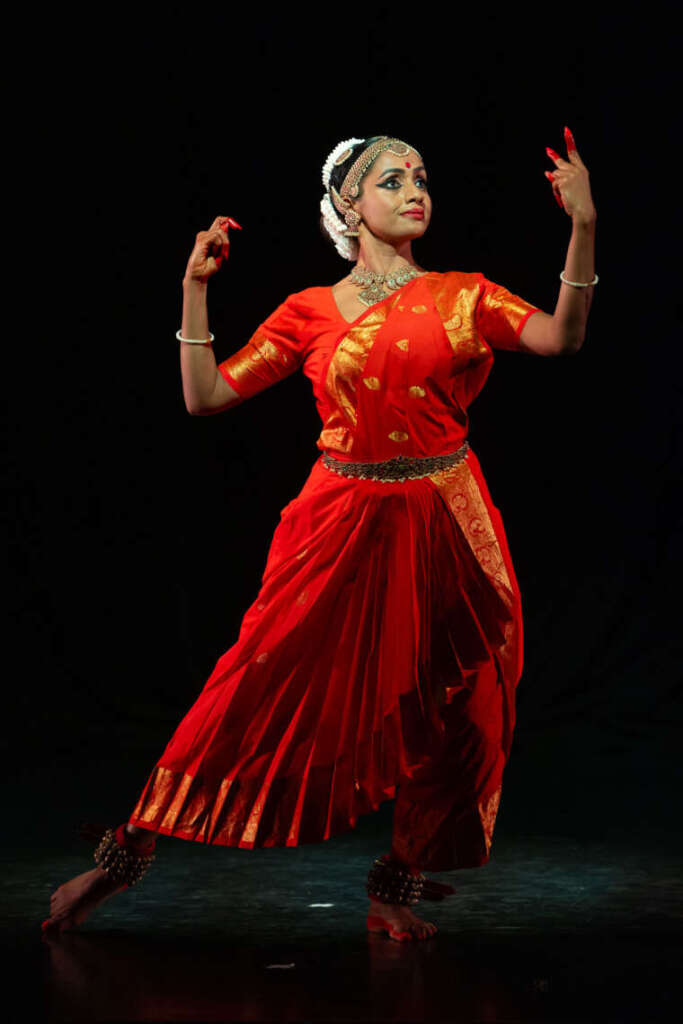
Perhaps most touching was the presence of a new generation of students, ranging from the tiniest to the teens, eagerly watching from backstage — a testament to Sankari’s role as a teacher and torchbearer. Pushkala Gopal movingly noted how Sankari is nurturing not only her own art but also “a whole family of Natya aspirants,” making the community “richer and happier.”
Anantakam has been possible with the guidance of Sri. Shyamjith Kiran and Smt. Viraja, whose mentorship has provided invaluable support in shaping this work into a beautiful expression of devotion and artistic mastery.
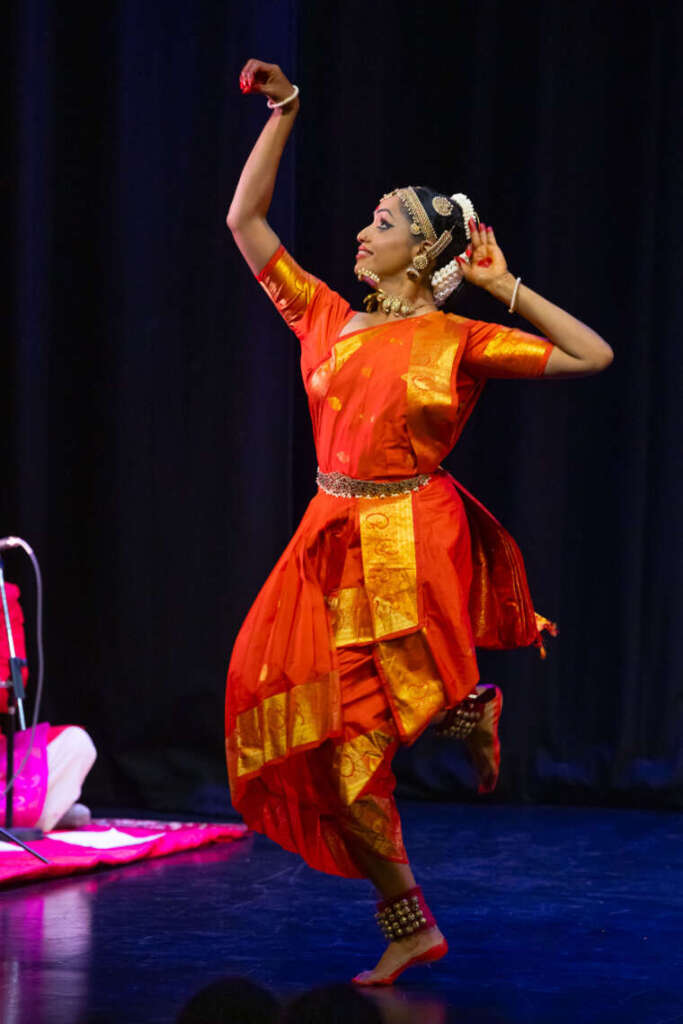
Anantakam revealed the transformative power of Bharatanatyam when practiced and presented with such truth, devotion, and rigour. It stood as a sacred dialogue — between dancer, divine, and audience — and reminded us all of the auspiciousness of the path we walk when we commit ourselves to art

